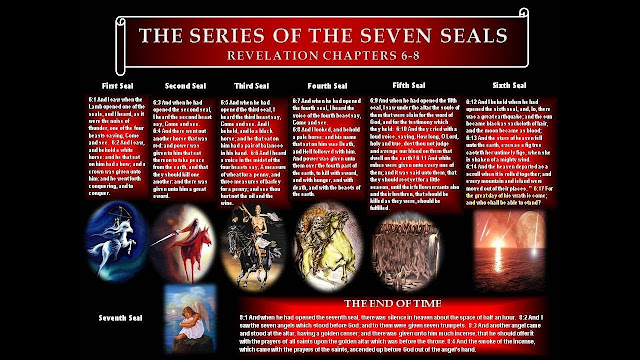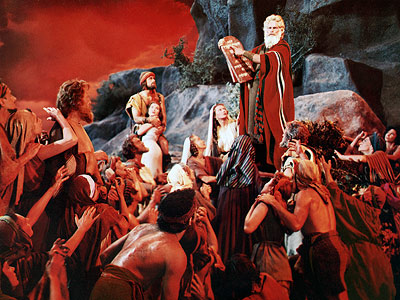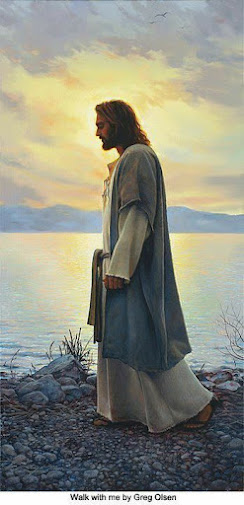Four horsemen of the Apocalypse
Four horsemen of the Apocalypse, in Christianity, the four horsemen who, according to the book of Revelation (6:1–8), appear with the opening of the seven seals that bring forth the cataclysm of the apocalypse. The first horseman rides a white horse, which scholars sometimes interpret to symbolize Christ; the second horseman rides a red horse and symbolizes war and bloodshed; the third rides a black horse and symbolizes famine; and the fourth horseman rides a pale horse and represents pestilence and death. Revelation 6, Jesus opens seven seals of judgment to begin the Tribulation period on earth. The first four seals he opens are the four horsemen, and each is released from heaven to usher in various judgments on the earth. While some apocalyptic judgments are specific events, these are overarching judgments that will last for periods throughout the Tribulation. Here's a look at each symbol individually:
The rider on the white horse is the Antichrist. He will arrive on the world scene at the beginning of the Tribulation and work to unite the nations, signing a peace treaty with Israel. He will be a charismatic leader that presents himself as the savior of the world. His power and authority will come from the dragon (Satan), and like Satan he is a great deceiver. The symbol of him on a white horse aptly illustrates this quality, then, for Jesus returns to earth on a white horse (Revelation 19:11-14). Satan's purpose has always been to counterfeit the work of Christ. By the second half of the Tribulation, the Antichrist will break his peace treaty and wage open war against believers.
The next horseman, the red horse, represents war and bloodshed. Nation will rise against nation during the Tribulation and individuals against each other. It is a time of murder, assassination, bloodshed, revolution, and war.
Black is often connected with famine in the Bible; and food shortage is a typical byproduct of the war that will be happening. A denarius was the standard daily wage for ancient laborers. In the early days of the Tribulation period, food will be in short supply; people will have to work all day just to get enough food to eat. Yet the luxuries of the wealthy (“oil and wine”) will remain untouched.
The famine will provide the way for the Antichrist’s rule. Later in the Tribulation, He will require the people to take his mark in order to buy or sell. Hunger will play into his hands and strengthen his control.
Death is the pale rider with Hades (hell) following behind. They will kill with the sword, hunger, disease, and wild beasts—the four judgments the Lord said he would send in Ezekiel 14:21. Death and Hades are mentioned together three times in Revelation, and the first time in Revelation 1:18 tells us that Christ holds the keys to Death and Hades. Though the companions will wreak havoc during the Tribulation, Jesus holds the ultimate power and will throw them both into the lake of fire after the Battle of Armageddon.
The White Horse
"And I looked, and behold, a white horse. He who sat on it had a bow; and a crown was given to him, and he went out conquering and to conquer." (Revelation 6:2)The rider on the white horse is the Antichrist. He will arrive on the world scene at the beginning of the Tribulation and work to unite the nations, signing a peace treaty with Israel. He will be a charismatic leader that presents himself as the savior of the world. His power and authority will come from the dragon (Satan), and like Satan he is a great deceiver. The symbol of him on a white horse aptly illustrates this quality, then, for Jesus returns to earth on a white horse (Revelation 19:11-14). Satan's purpose has always been to counterfeit the work of Christ. By the second half of the Tribulation, the Antichrist will break his peace treaty and wage open war against believers.
The Red Horse
“Another horse, fiery red, went out. And it was granted to the one who sat on it to take peace from the earth, and that people should kill one another; and there was given to him a great sword.” (Revelation 6:4)The next horseman, the red horse, represents war and bloodshed. Nation will rise against nation during the Tribulation and individuals against each other. It is a time of murder, assassination, bloodshed, revolution, and war.
The Black Horse
“So I looked, and behold, a black horse, and he who sat on it had a pair of scales in his hand. And I heard a voice in the midst of the four living creatures saying, ‘A quart of wheat for a denarius, and three quarts of barley for a denarius; and do not harm the oil and the wine.’” (Revelation 6:5-6)Black is often connected with famine in the Bible; and food shortage is a typical byproduct of the war that will be happening. A denarius was the standard daily wage for ancient laborers. In the early days of the Tribulation period, food will be in short supply; people will have to work all day just to get enough food to eat. Yet the luxuries of the wealthy (“oil and wine”) will remain untouched.
The famine will provide the way for the Antichrist’s rule. Later in the Tribulation, He will require the people to take his mark in order to buy or sell. Hunger will play into his hands and strengthen his control.
The Pale Horse
“So I looked, and behold, a pale horse. And the name of him who sat on it was Death, and Hades followed with him. And power was given to them over a fourth of the earth, to kill with sword, with hunger, with death, and by the beasts of the earth.” (Revelation 6:8)Death is the pale rider with Hades (hell) following behind. They will kill with the sword, hunger, disease, and wild beasts—the four judgments the Lord said he would send in Ezekiel 14:21. Death and Hades are mentioned together three times in Revelation, and the first time in Revelation 1:18 tells us that Christ holds the keys to Death and Hades. Though the companions will wreak havoc during the Tribulation, Jesus holds the ultimate power and will throw them both into the lake of fire after the Battle of Armageddon.






